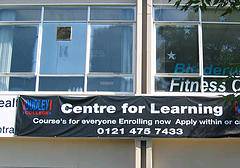[Summary: Inviting feedback on first public draft of working paper about developing social network site applications for young people that can be effective and engaging, whilst also promoting safety and limiting risk to young people (PDF)]
Update 18th May 2009: Version 1.0 of the paper posted here.
For the Plings project – concerned with promoting positive activities to young people – Social Network Sites (SNS) offer amazing opportunities. One of the main ways people find out about positive activities (the football club, dance group or arts society for example) is through word of mouth. So if you can feed information about positive activities into SNS, and increase the flows of information about positive activities through the networks of young people already active there, you could potentially have a big impact on young people’s awareness of activities they could take part in.
Take a look at the slidecast below to get an idea of how a Social Network Site application could work:
 Of course, local authorities and professionals working with young people have a duty not only to make sure young people are aware of the positive activities available to them, but also a duty to keep young people safe from harm – and Social Network Sites can be places of risk as well as of opportunity. Which is why public and third-sector organisations engaging with SNS shouldn’t just copy the ‘viral marketting’ and often aggressive tactics of commercial SNS application builders – but need to develop a clear ethical and risk assessment framework for engaging with Social Network Sites.
Of course, local authorities and professionals working with young people have a duty not only to make sure young people are aware of the positive activities available to them, but also a duty to keep young people safe from harm – and Social Network Sites can be places of risk as well as of opportunity. Which is why public and third-sector organisations engaging with SNS shouldn’t just copy the ‘viral marketting’ and often aggressive tactics of commercial SNS application builders – but need to develop a clear ethical and risk assessment framework for engaging with Social Network Sites.
I hope that this working paper which I’ve put together for the ISP/Plings project can go some way to starting off that development.
‘Safe and effective SNS applications for young people: considerations in building social networking
applications for under 19s’ aims to build a coherent foundation to support public and third-sector engagement with SNS through application building by:
 Unpacking the reasons why we need to treat young people differently;
Unpacking the reasons why we need to treat young people differently;- Exploring the features of Social Network Sites which lead to both amazing opportunities, and potential risks;
- Clearly identifying the risks to young people within the Social Network Site space;
- Proposing three levels of response that should lead to safe and effective application building;
The document also includes an outline risk assessment framework.
The three responses proposed are:
- Abiding by ethical principles – and designing applications on the basis of principles derived from law, a respect for young people’s rights, and existing principles from professional practice;
- Having a clear risk assessment in place for all projects – to make sure potential risks are identified and design decisions or resources put in place to limit potential harm to young people;
- Building safety in – and creating applications which empower young people and encourage general safe online behavior.
So, if you’re exploring the use of Social Network Sites to engage young people, whether in positive activities or participation opportunities – or if you’ve got experience of e-safety or Social Network Site applications please do take a look at the ‘Safe and Effective SNS for young people’ working paper and share your reflections, questions and feedback.
Exploring further
This first public draft of the paper is hopefully just a starting point of a deeper exploration on building positive SNS applications. In particular:
- The ISP/Plings project will be seeking to operationalise some of the learning in this paper, so it’s proposals, and the feedback and comments on it should have an opportunitity to be explored in practice over the first half of next year…
- I’ll be leading an exploration of using applications for youth participation as part of the Local Government Information Unit Action Learning Set on SNS and Youth Participation. (N.B. Application deadline extended until 9th Jan 2009 in case you wanted to come along… but have not yet had chance to register…)
- If there is enough interest – then I’d love to host a seminar on SNS applications and youth engagement early in 2009 – exploring both this paper, and emerging practice from the field. If you would be interested in taking part do drop me a line (tim at practicalparticipation dot org dot uk) or leave a comment on this blog post.
- All comments and feedback on the paper are most welcome. Again, e-mail or comment below…

 The Young Researcher Network have just launched their programme of basic training for their network of 15 youth-led research projects (I created some resources for their launch conference in December last year) – and they're planning what training will come next. So far, with help from the
The Young Researcher Network have just launched their programme of basic training for their network of 15 youth-led research projects (I created some resources for their launch conference in December last year) – and they're planning what training will come next. So far, with help from the 
.jpg) Reason #1: Relevance . We don't generally get 6 year olds to fill in surveys. And indeed, if your survey is about insurance product choice then I would suggest you're right to avoid burdening a child with questions about attitudes towards fiscal risk.
Reason #1: Relevance . We don't generally get 6 year olds to fill in surveys. And indeed, if your survey is about insurance product choice then I would suggest you're right to avoid burdening a child with questions about attitudes towards fiscal risk.